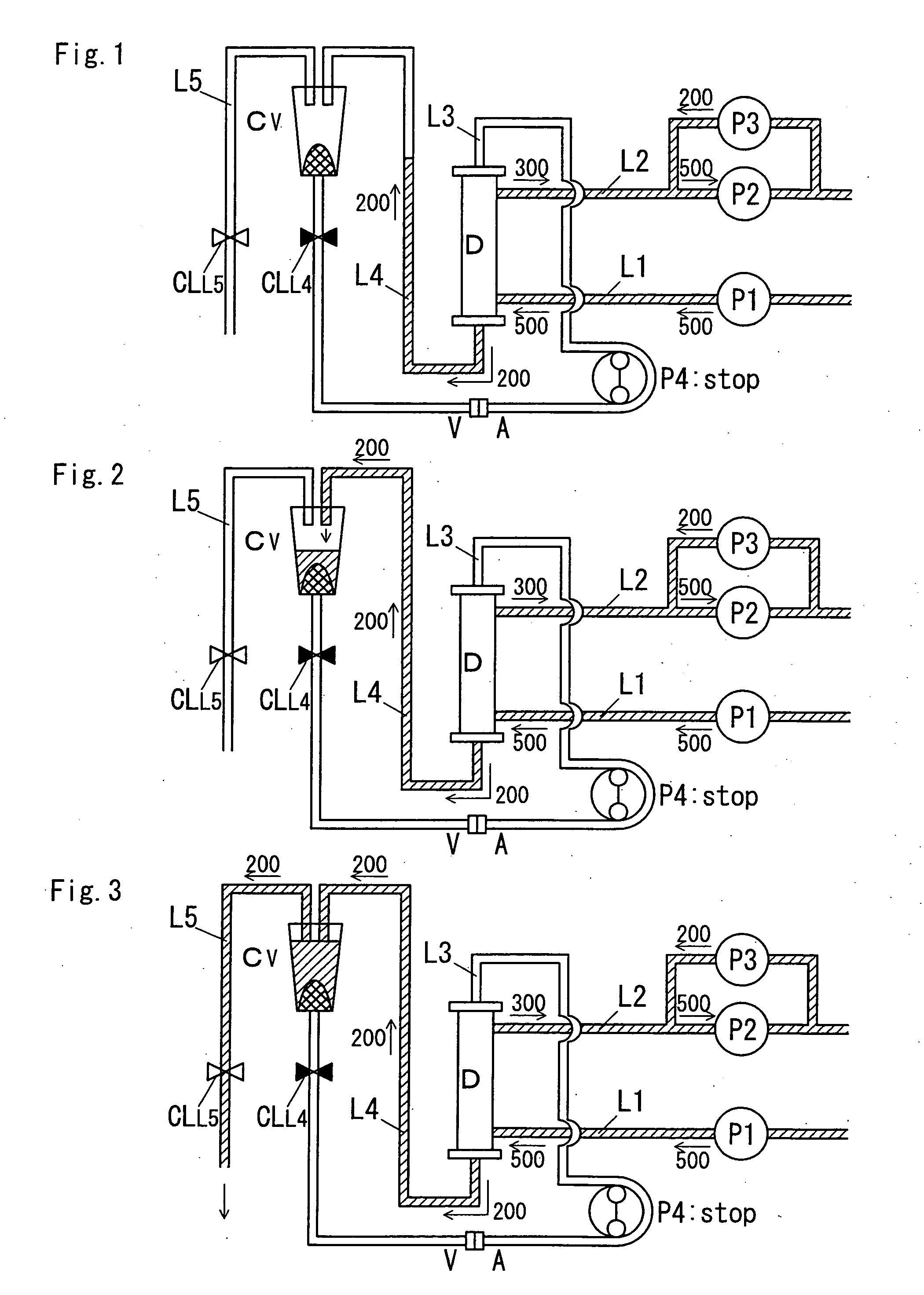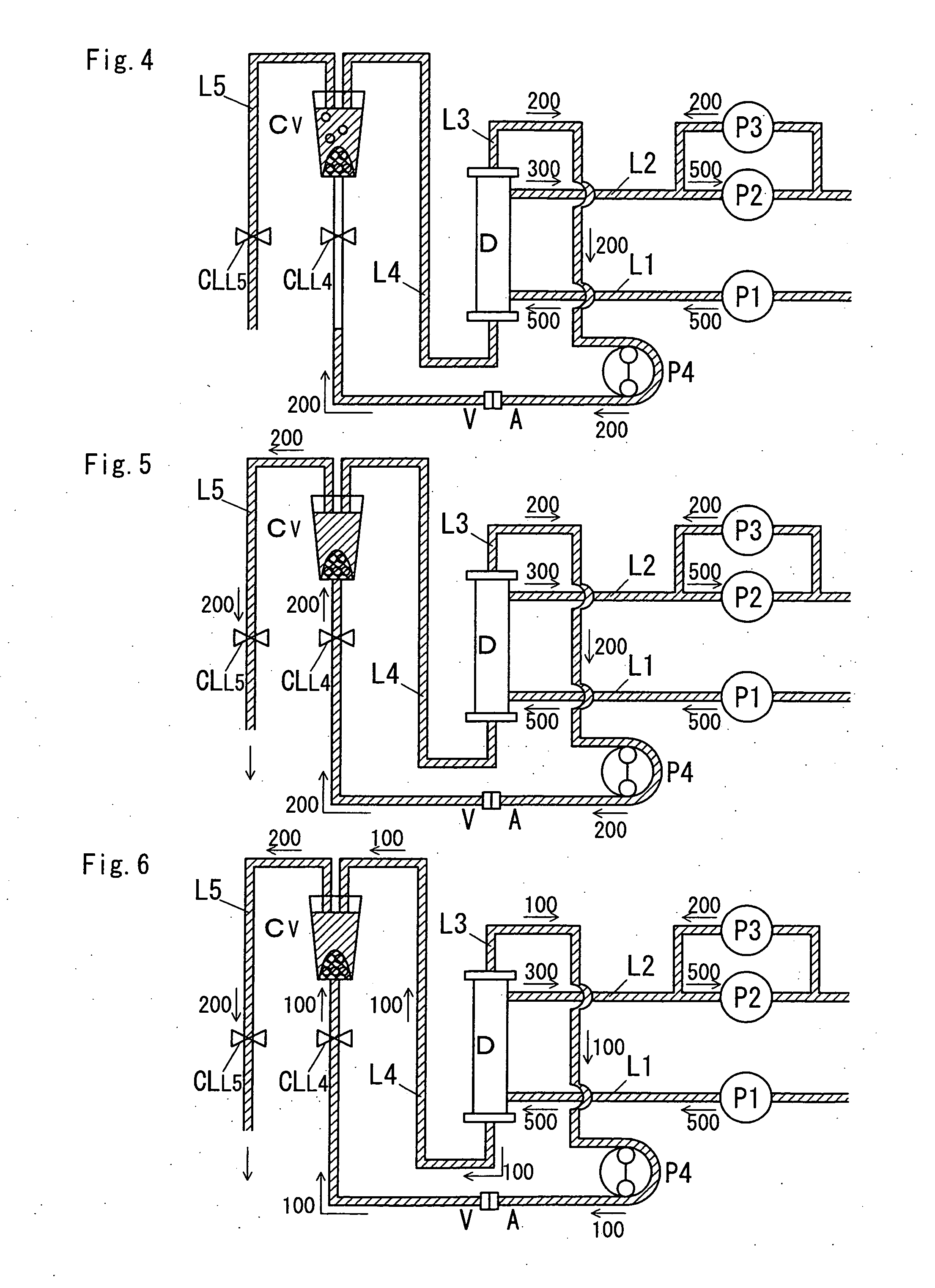Blood dialysis apparatus
a technology of hemodialysis and apparatus, which is applied in the direction of suction devices, control devices, other medical devices, etc., can solve the problems of air trapped in the mesh and the risk of air entrainment into the patient's body
- Summary
- Abstract
- Description
- Claims
- Application Information
AI Technical Summary
Benefits of technology
Problems solved by technology
Method used
Image
Examples
first embodiment
[0070]The first embodiment is a hemodialysis apparatus including a hemodialyzer D of a wet type.
[0071]FIGS. 7 to 11 are diagrams illustrating the operation of the first embodiment, and flows of a dialysate and air due to the operation. Numerical values illustrated in the figures indicate flow rates of the dialysate, and arrows indicate directions along which the dialysate flows.
[0072]The first embodiment is characterized in flow passage selection and a washing direction of the priming solution (dialysate) due to control means G1, which is described.
[0073](First Process)
[0074]In a first process, as illustrated in FIG. 7, a blood pump P4 reversely rotates at the same speed as a reverse filtration speed made by third fluid feeding means P3. For example, in a state where each of first fluid feeding means P1 and second fluid feeding means P2 is operated at a flow rate of 500 ml / min, the third fluid feeding means P3 is operated at 200 ml / min in the reverse filtration direction, and the bl...
second embodiment
[0095]The second embodiment is a hemodialysis apparatus including a hemodialyzer D of the wet type or the dry type.
[0096]FIGS. 12 to 17 are diagrams illustrating the operation of the second embodiment when the hemodialyzer D of the dry type is used and flows of a dialysate and the air due to the operation. Numerical values illustrated in the figures indicate flow rates of the dialysate, and arrows indicate directions along which the dialysate flows. The numerical values in the figures each indicate a flow rate of the dialysate including air when the air exists in a flow passage located at the number.
[0097]The second embodiment is also characterized in the flow selection and the washing direction of the priming solution due to the control means G2, which is described.
[0098]According to the second embodiment, as illustrated in FIGS. 12 to 17, the blood pump P4 forwardly rotates at a speed lower than the reverse filtration speed made by the third fluid feeding means P3. For example, in...
PUM
 Login to View More
Login to View More Abstract
Description
Claims
Application Information
 Login to View More
Login to View More - R&D
- Intellectual Property
- Life Sciences
- Materials
- Tech Scout
- Unparalleled Data Quality
- Higher Quality Content
- 60% Fewer Hallucinations
Browse by: Latest US Patents, China's latest patents, Technical Efficacy Thesaurus, Application Domain, Technology Topic, Popular Technical Reports.
© 2025 PatSnap. All rights reserved.Legal|Privacy policy|Modern Slavery Act Transparency Statement|Sitemap|About US| Contact US: help@patsnap.com



